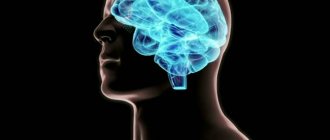What is the somatic health of an individual? This is the current state of the body and organs.
What is the somatic state of a person? These are certain indicators or elements of health. Here we are talking about the level and harmony of physical development, the functional state of the body, the level of immune defense and nonspecific resistance, and existing diseases or developmental defects.
This is a kind of energy potential of the body from the point of view of biology and medicine.
Assessment of physical (somatic) health
Professor Apanasenko G. A. believes that the level of somatic health can be measured by a simple, reliable and accessible method. The assessment is carried out in points. To do this, you need to determine some indicators:
- body weight;
- height;
- blood pressure;
- hand strength;
- heart rate;
- vital capacity of the lungs;
- the time it takes for the heart rate to recover after exercise.
This method helps to identify deviations from the norm in a timely manner. Somatic health is also determined by other indicators:
- experience in physical exercise;
- general endurance;
- strength endurance;
- dexterity;
- effectiveness of the immune system;
- maximum oxygen consumption;
- presence of chronic diseases.
Factors influencing the somatic condition
Any disturbances in the human body can be caused by:
- Psychological factors, mental disorders that affect how a somatic disease develops and proceeds.
- Mental disorders as a personality reaction to somatic illness.
- A mental disorder that results from physiological changes in somatic illnesses.
- Somatic manifestations obscure mental disorders (masked depression, hysteria).
- Psychosomatic diseases.
It is important to note the following. With various somatic diseases - severe, life-threatening - neurotic disorders are especially acute. For example, a stroke or heart attack, oncology or HIV infection, or illnesses leading to a defect in appearance can provoke depression. It is important for the relatives of such a person to pay attention to this in a timely manner and try to help him. You may need to see a psychologist or psychotherapist.
Senestopathies
Senestopathies are unpleasant, sometimes even painful bodily (somatic) sensations that do not have a physiological basis.
They usually appear if a person has mental disorders: depression, neurosis, paranoia, manic-depressive psychosis (at its depressive stage, hypochondria and others).
When examining the patient, no reason is found for his discomfort .
But despite this, sensopathy causes great inconvenience to a person and can even complicate the course of his mental illness.
Psychiatrists treat sensopathy.
Sensopathies are of the following types:
- thermal sensations (cold, chills, heat, burning);
- feeling of tension;
- sensations of liquid (transfusion, clogging, uncorking, pulsation);
- feeling of burning pain;
- sensations of movement (moving, twisting, turning over).
A distinctive feature of sensopathy is the presence of somatic complaints - this is when the patient experiences significant difficulties in describing his sensations.
They also have great variety and emotional richness. Because of this, it is difficult for a person to relax or get distracted : all his thoughts are concentrated around these sensations.
Somatic sensations usually occur in the head area, and much less often in the chest and abdomen. Sensopathies in the extremities are practically not found.
Children
What is a healthy child? It has been noted that children are susceptible to a higher incidence than representatives of other age groups. They suffer from chronic pathologies. For example, this includes high or low blood pressure, chronic inflammatory processes in the upper respiratory tract, and diseases of the musculoskeletal system. Girls are affected more often than boys. Poor sleep and headaches are considered psychosomatic. The stress factor also plays a significant role here.
That is, a healthy child can only be in a healthy family with a normal psychological climate.
Stages of treatment
The most important stage in the treatment of a psychosomatic disorder is a full diagnosis, where the true cause of the formation of this type of disorder of nervous activity will be clarified.
To carry out a correct differential diagnosis, you will need to be examined by several doctors of related specializations, and first of all, a psychotherapist and a neurologist.
After a complete and accurate diagnosis has been established, a treatment regimen is individually selected, where first aid should be provided in the first stages.
It must be remembered that this condition is very difficult for the patient to tolerate and the symptoms should be eliminated as quickly as possible.
In parallel, the main neurometabolic active treatment begins, which is preferably carried out according to the scheme of hospital-replacing techniques in outpatient care. Only in the most severe cases is a hospital recommended, only if the human body is in an extremely depleted state.
After stabilization of the condition, rehabilitation and recovery measures are required, when psychotherapy and special methods of restorative medicine are involved.
Psychosomatic disorder
A psychosomatic disorder is often confused with a somatic pathology and a person finds himself in a forced “vicious circle” of visiting different doctors, examinations, and drinking mountains of unnecessary and, often very harmful to his health, pills.
And this circle can be so strong and vicious that it even leads to serious surgical intervention; people lose healthy organs or body parts completely in vain, and the problem gets worse and worse. There are other organs that begin to “sick” in the same way.
This continues until either a competent doctor is found who will refer him to a psychotherapist, or the person accidentally receives the necessary information about his condition and comes to see the only necessary doctor in these cases.
In severe cases of manifestation of a psychosomatic disorder, a person does not distinguish any changes in his mental state, since all his attention is aimed at combating the symptoms and, unfortunately, not only the patient himself, but also doctors often try to deal with the symptoms, forgetting about the main thing - that you need to fight the cause, and the symptoms, in the absence of a cause, will go away on their own.
Psychosomatic symptoms can have a wide variety of directions. From headaches to heel pain. No organ can be protected from possible manifestations of a psychosomatic disorder. And that is why it is so important not to miss this condition of the nervous system, otherwise treatment will be pointless, and the underlying disease will continue to develop.
Frequent complaints in psychosomatic disorders
- Heart pain, palpitations, chest pain, chest pain.
- Psychosomatic disorders.
- Muscle pain, muscle pain, muscle torsion, muscle pull.
- Lower back pain, heaviness in the lower back or pain and heaviness in the back.
- Headaches of various types and intensity.
- Heaviness in the body, heaviness in the limbs.
- Feelings of heat or chills. Attacks or “hot flashes” of heat, chills.
- Feeling of a lump in the throat, difficulty swallowing, choking.
- Nausea, stomach pain, gastrointestinal disorders, abdominal pain.
- Feeling of weakness, feeling of emptiness, fatigue.
- Dizziness, feeling of powerlessness.
- Feeling of numbness and tingling in different parts of the body.
Manifestations
Psychosomatics reflects the processes of dysfunction of higher nervous activity and transformed into bodily (somatic) sensations, which manifest themselves in the form of symptoms of various diseases of individual organs or tissues.
Soma - Body, torso. The totality of all cells of the body, with the exception of reproductive cells.
Somatic diseases are diseases of internal organs.
Somatic sphere - Bodily sphere.
Somatization – Pathomorphosis (or Nosomorphosis, this is a change in the signs of a disease, a change in morbidity) of some mental disorders, in which vegetative disorders predominate over psychopathological ones. The occurrence of diseases of internal organs as a result of mental conflicts. The term “somatization” was introduced into medical practice as an alternative to the concept of “conversion”. Initially, somatization was understood as the transformation of intrapsychic psychological conflicts into true somatic diseases, and subsequently - a set of various psychopathological disorders with a predominance of somatovegetative components.
Somatization disorder - A mental disorder characterized by a multitude of repeated bodily complaints in the absence of disorders that explain these complaints or are adequate to them.
Psychosomatic symptoms are often accompanied by depression or increased anxiety, disrupt personal communication and family relationships, and lead to unnecessary treatment or surgery.
Teenagers
The All-Russian medical examination of children (2002) allowed us to draw the following conclusions. In the system of somatic diseases of adolescents from 15 to 17 years old, changes are observed: diseases of the endocrine system, neoplasms progress, infectious and parasitic diseases, and pathologies in the genitourinary system are observed. Somatic health is clearly suffering.
It is special in adolescents, and it is determined by two fundamental processes that occur during the transition period. The latter is characterized by a pubertal restructuring of the regulatory structure, which ensures physical, sexual and psychosexual development, on the one hand, and enters the final stage of psychosocial development, on the other.
Treatment of psychosomatic disorder
Mental conditions accompanied by psychosomatic symptoms must be treated with active neurometabolic drugs in combination with symptomatic drugs that relieve the pathological effect on a particular organ. In the first stages of treatment, active therapy using intravenous infusions is required. This is due to the fact that in the first stages, rapid localization and relief of the most actively manifested symptoms is required, which can only be achieved with the direct introduction of the necessary restorative drugs into the blood. In the subsequent period, tablet forms of medications are prescribed, psychotherapeutic techniques and methods of restorative neurotherapy are used. Cognitive psychotherapy and/or mild hypnotic techniques may sometimes be appropriate.
Diagnosis and treatment of psychosomatic disorder
Psychosomatic disorders, as a rule, respond well to treatment and have a positive prognosis. Treatment of psychosomatic disorders is usually carried out under the patronage of a psychotherapist and neurologist, possibly in collaboration with a specialist who treats a particular organ about which a person complains.
Somatogenic reaction is a term used to designate mental disorders (asthenic syndrome, exogenous type of reaction, transient syndromes) that occur in diseases of internal organs and other non-mental diseases.
Somato-vegetative disorder - A combination of autonomic and somatic disorders.
Somatoagnosia - Impairment of the correct perception of the body diagram. It is observed with focal lesions of the parietal lobe of the cerebral hemispheres, schizophrenia, depression, age-related changes in the brain (involutional processes), epilepsy, neuroses, poisoning.
Somatoform disorder - According to ICD-10, F45. The main characteristic of somatoform disorders is persistent complaints of physical disorders and insistent demands for medical research, despite repeated negative results and assurances from doctors that the symptoms are not physically caused. If any physical disorders exist, they do not explain the nature and extent of the symptoms or distress and preoccupation with them on the part of the patient.
There are six types of somatoform disorders: 1. Somatized. 2. Undifferentiated. 3. Conversion. 4. Painful. 5. Hypochondriacal. 6. Unspecified.
Psychosomatics
Psychosomatics is a direction of mental research that studies the influence of mental factors on the occurrence and course of somatic diseases. A direction in medicine that emphasizes the role of mental factors in the cause of the occurrence and course of various functional and organic diseases.
Psychosomatic disorder
This term means a somatic disease that is caused by psychological factors or the manifestations of which are aggravated as a result of their influence. Stress, conflict and generalized anxiety equally affect most somatic disorders, but in some cases they are of paramount importance. Psychosomatic disorders belong to the category of mental factors affecting the physical state. Psychosomatic disorders are considered to be disorders of the functions of organs and systems, in the origin and course of which the leading role belongs to the influence of psychotraumatic factors (stress, conflicts, crisis conditions, etc.). Sometimes this term is replaced by the following: “psychophysiological disorder”, “disease of stress”, pathology of modern civilization”, “disease of communication”, disease of adaptation and maladjustment”, pathology of psychostasis”.
Psychosomatic balancing
Correlation according to the type of inverse proportionality between mental and somatic manifestations in the clinical picture of a number of psychosomatic, especially borderline, disorders. Many modern researchers come to the conclusion that psychosomatic balancing is the Law that determines the relationship between somatic and mental pathology. With endogenous depression, for example, the intensity of vegetosomatic manifestations is greater than the manifestation of depression itself.
Somatoform disorder
Essentially, these are psychogenic disorders, which, along with neuroses and psychopathy, constitute the largest share among diseases traditionally classified as minor or borderline (community) psychiatry and psychotherapy. Common to all psychosomatosis is an acute or gradual onset, often with neurotic depression. The clinical picture of the disease is represented by a variety of somatic complaints and symptoms, behind which there are distinct affective disorders, often classified as senestopathies. Mental manifestations of psychosomatosis in the acute period are often limited to anxiety, panic reactions, depression, and IBS. The chronic course of the disease leads to the appearance of distinct neurosis-like and, most often, psychopathic-like disorders. To diagnose psychosomatosis, psychosomatic disorder, somatoform disorder, it is necessary to undergo a full pathopsychic examination by a psychotherapist. It is necessary to identify the somatic disorder and the psychogenic factors that caused it. For example, a mentally significant external stimulus that has a temporary connection with the occurrence of complaints or exacerbation of a somatic disease. The patient's somatic condition must be marked by a pronounced organic disorder. For example, rheumatoid arthritis or heart disease. Or an identifiable pathophysiological process, such as migraine.
A good psychotherapist is able to discern and correctly determine the true causes of various types of psychosomatics and somatic diseases in a patient. The doctor should not deal only with removing symptoms, he should deal directly with the true cause of why a wide variety of bodily symptoms appear. Our doctors do not treat psychosomatic disorders symptomatically, but find the true reason why these symptoms appear and destroy it.
Diseases of adolescents in structural characteristics
What diseases are most often of a somatic nature?
- Diseases that have a nosological form are common to age groups (let’s take anemia and pneumonia as examples).
- Diseases characteristic of puberty (for example, a disorder of bilirubin metabolism called Gilbert's syndrome, osteochondropathy, hypothalamic syndrome during puberty, enlarged thyroid gland).
- Characteristic of the developmental phase in life are “behavioral diseases” (increased trauma, STDs or diseases transmitted as a result of unprotected sex, use of alcohol, drugs, etc.).
- The list of rare diseases includes hypertension.
This is how the somatic health of a child suffers during adolescence.
Types of pathologies
General somatic diseases include many components. For convenience, they are classified into the following types:
- Pathological disorders. Their appearance is directly related to the individual characteristics of the body. For example, a tendency to be overweight or get injured. Note that the occurrence of this type of disease is facilitated by bad habits that a person has (smoking, drinking alcohol, overeating, etc.)
- Organic diseases. This type usually appears due to a person’s anxiety, his fears (as a rule, not supported by anything), and the influence of stress. In this case, the person experiences strong painful sensations, and their localization may be different.
- Conversion diseases. This type of disease appears as a result of a neurotic conflict.
A distinctive feature of these somatic disorders is their temporary nature.Examples of this type of disease include deafness, paralysis or blindness.
Separately, it is necessary to highlight somatic neurosis. It may be accompanied by disturbances in appetite (both its complete absence and a sudden increase), problems with the digestive tract, wandering pain, almost constant headache, dizziness and weakness, heart rhythm disturbances, surges in blood pressure, poor coordination and tremors in the limbs.
Chronic somatic diseases. This category of somatic diseases is distinguished by the fact that, as a rule, they appear at a young age and extremely rarely occur after 30 years.
Women are more susceptible to it .
At the same time, the likelihood of the appearance of chronic somatic diseases in women who have similar problems by inheritance.
Drug and drug addiction can increase the chances of this type of disease occurring.
Chronic somatic diseases include the following :
- problems with the digestive system (for example, ulcers, gastritis);
- asthma or bronchitis;
- ulcerative colitis;
- kidney disease;
- arthritis
- and so on.
Severe somatic diseases . Chronic somatic diseases include the following:
- blood clotting disorder;
- neurodermatitis;
- hepatitis;
- pneumonia;
- and so on.
What suffers most often?
In this large system, we can identify the basis - a disorder of the endocrine system, pathologies of the central nervous system and the fact of dysplasia (muscle weakness). In this case, it would be reasonable to correct the underlying pathologies rather than treat differentially the disorders.
When analyzing the health status of an individual teenager, it is important to identify and assess the interdependence of different components of health (somatic, reproductive, mental, social components). In this case, prevention and treatment will be optimal and effective. In this case, a “convex” example would be the diagnosis of anorexia nervosa. A symptom such as cessation of menstruation may be a reason to contact a specialist.
Symptoms and signs
The most common somatic symptoms are:
- Insomnia . Many people do not consider this a big problem and do not consider it a symptom. In addition, most people try to cope with it on their own, without turning to specialists for help. As a result, they buy sleeping pills (the most advertised ones or on the recommendation of friends) and use them uncontrollably. And they don’t even realize that this is the same somatic symptom and it must be treated in a complex manner.
- Problems with appetite (decreased to the point of complete refusal to eat or increased in the form of overeating). This leads to either anorexia/bulimia or obesity. All this can act as a symptom of a somatic disease, which will result in complications with the functioning of the digestive process.
- Sexual disorders .
They arise most often due to unhealthy self-esteem, fears, disgust towards a partner or prolonged abstinence. In men, this symptom can be expressed in decreased libido or problems with erection. As for women, the symptom manifests itself in the form of pain during sex or (most common) in the form of a lack of orgasm. - Painful sensations. This symptom usually develops in sensitive people, suspicious and easily susceptible to anxiety. In this case, pain can occur in absolutely any organ, but, as a rule, this is the place that a person has the weakest (for example, an operation was previously performed on it or there is a possibility of getting a hereditary disease).
Children are also susceptible to somatic diseases .
So, there is a somatic weakening of the child - this is the name of neuropathy, which creates some difficulties in the process of development of the child, both emotional and psychophysical.
At the same time, in childhood, somatic diseases, as a rule, have the following symptoms :
- high sensitivity to various types of infections;
- emotional instability (sudden mood swings, frequent whims and hysterics, etc.);
- predisposition to allergies;
- dependence of mood or well-being on weather conditions;
- weak immunity, decreased body defenses;
- the presence of tics, stuttering or other psychomotor disorders.
The classification of psychosomatic disorders is presented here.
What somatic diseases are caused by poor nutrition of a child? Find out from the video:
Adults
Mature people react more adequately to illness. But older people become hypochondriacs and more often suffer from phobias and depression. They listen to their feelings and become scrupulous in matters of health. But this doesn't always happen. It all depends on the individual characteristics of the individual.
We looked at somatic health. It is necessary to carefully monitor him, visit doctors in a timely manner and undergo a comprehensive examination.










